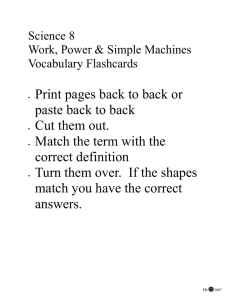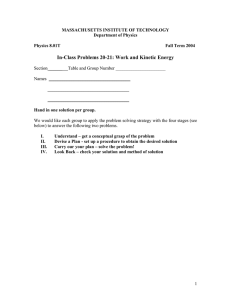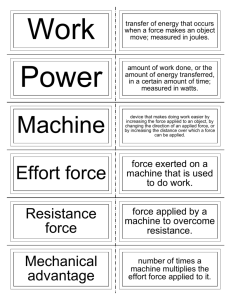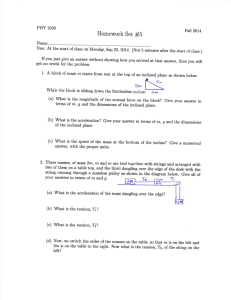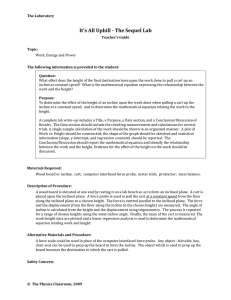Inclined Plane Lab
advertisement
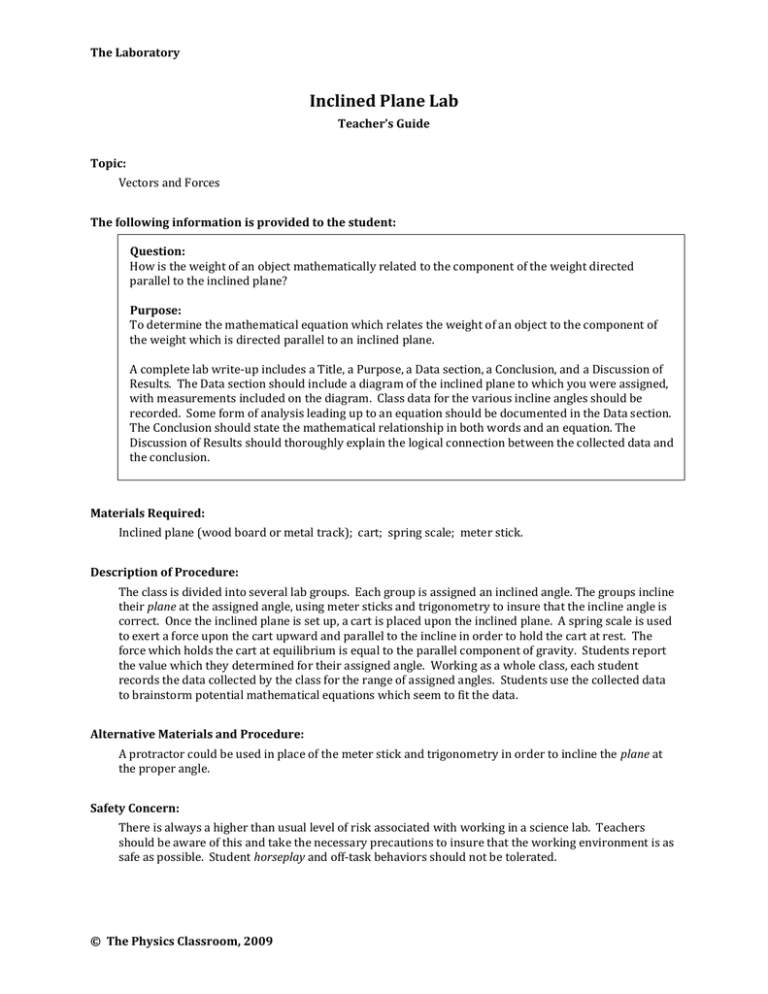
The Laboratory Inclined Plane Lab Teacher’s Guide Topic: Vectors and Forces The following information is provided to the student: Question: How is the weight of an object mathematically related to the component of the weight directed parallel to the inclined plane? Purpose: To determine the mathematical equation which relates the weight of an object to the component of the weight which is directed parallel to an inclined plane. A complete lab write-up includes a Title, a Purpose, a Data section, a Conclusion, and a Discussion of Results. The Data section should include a diagram of the inclined plane to which you were assigned, with measurements included on the diagram. Class data for the various incline angles should be recorded. Some form of analysis leading up to an equation should be documented in the Data section. The Conclusion should state the mathematical relationship in both words and an equation. The Discussion of Results should thoroughly explain the logical connection between the collected data and the conclusion. Materials Required: Inclined plane (wood board or metal track); cart; spring scale; meter stick. Description of Procedure: The class is divided into several lab groups. Each group is assigned an inclined angle. The groups incline their plane at the assigned angle, using meter sticks and trigonometry to insure that the incline angle is correct. Once the inclined plane is set up, a cart is placed upon the inclined plane. A spring scale is used to exert a force upon the cart upward and parallel to the incline in order to hold the cart at rest. The force which holds the cart at equilibrium is equal to the parallel component of gravity. Students report the value which they determined for their assigned angle. Working as a whole class, each student records the data collected by the class for the range of assigned angles. Students use the collected data to brainstorm potential mathematical equations which seem to fit the data. Alternative Materials and Procedure: A protractor could be used in place of the meter stick and trigonometry in order to incline the plane at the proper angle. Safety Concern: There is always a higher than usual level of risk associated with working in a science lab. Teachers should be aware of this and take the necessary precautions to insure that the working environment is as safe as possible. Student horseplay and off-task behaviors should not be tolerated. © The Physics Classroom, 2009 The Laboratory Suggestions, Precautions, Notes: 1. 2. 3. 4. This lab is recommended as an introduction to inclined planes. It makes an excellent inquiry activity in which the entire class works together and compiles data in an effort to answer a question. Because many students know the value of the sine of 30° and the sine of 45°, it is important to assign a couple of lab groups to these angles. The success of students determining the answer to the question almost hinges on the accuracy of the measurements made for these angles. A range of other angles extending from about 20° to 70° should also be used. Have a plan in place for helping student groups to secure the plane in such a manner that the bottom end does not slide out of place. Depending on how the inclined plane is propped up, one potential hazard is that the plane can topple over causing considerable damage to people and property. Warn students in advance of the hazards, taking the opportunity to discuss the physics of torque, unbalanced torques and rotation. Auxiliary Materials: None Scoring Rubric: VF6. Inclined Plane Lab Included, labeled and organized all parts of the lab report. Data section includes a diagram with recorded data. Class data is recorded; units are stated. Includes a thorough and accurate analysis of the data in an effort to determine the mathematical equation; this might include several failed attempts and wrong turns. Conclusion states the relationship in both words and an equation. Discussion of Results includes a thorough discussion of the logical connection between the collected data and the conclusion. Reveals a solid understanding. Score _____/_____ Connections to The Physics Classroom Tutorial: The following reading is a suitable accompaniment to this lab: http://www.physicsclassroom.com/Class/vectors/u3l3e.cfm Connections to Minds on Physics Internet Modules: Sublevels 5 and 6 of the Forces in Two Dimensions module are a suitable accompaniment to this lab: http://www.physicsclassroom.com/mop/module.cfm © The Physics Classroom, 2009
